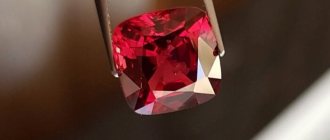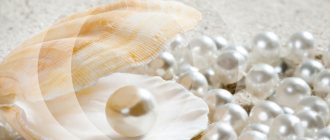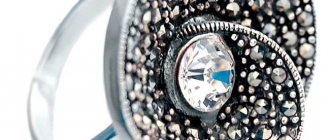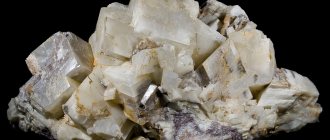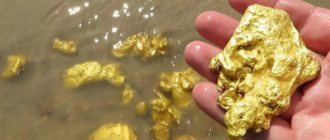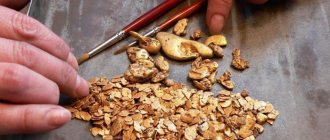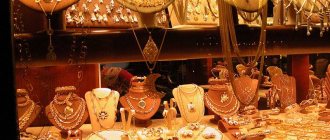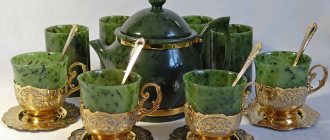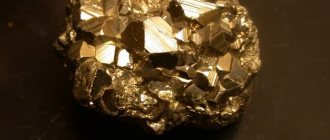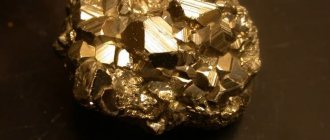Granite is the main element of the continental crust. The stone is known for its hardness; once it is extracted from a quarry, it can exist virtually unchanged for hundreds of years in the open air. Temperature changes and precipitation do not affect the appearance and hardness of this material. Thanks to the hardness of this material, granite buildings and sculptures have existed for thousands of years - obelisks were built from this material, figures of animals and people were carved from this material back in Ancient Egypt. We present interesting facts about granite.
Yosemite National Park, USA
Physical properties
Translated from Latin, “granum” means “grain”. The stone is a mixture of feldspar and quartz, and may also contain other minerals. In the distant past, due to volcanic activity, these substances were in a molten state, slowly cooling, they formed crystals. Because these crystals are small, they give granite its grainy texture.
The material conducts sound well. The speed of sound waves is 10 times greater than in air.
Granite is 2.5 times heavier than water.
The most common granite is black or gray in color. But this stone exists in many other colors - it can be green, yellow, red, orange. The color depends on how much spar is present in the stone, as well as the type of spar. When white feldspar is mixed with white plagioclase, the resulting white or gray industrial granite is called granodiorite.
The hardest granite has a fine-grained structure. In the open air, this material can stand without visible changes for up to half a thousand years. Of course, products made from this material can last for many thousands of years, only temperature changes and exposure to moisture can somewhat affect the structure, microcracks appear that can expand over time.
There is an artificial substitute - porcelain stoneware. It is made in various colors and structures. This material is not so durable (hardness on the Mohs scale is about 7, granite hardness is 8), but it is convenient for the manufacture of various materials.
Granite can be radioactive because it may contain small amounts of uranium and radon gas. There are types of granites, the radiation of which is 20 times higher than the maximum permissible norm. You should not be afraid of this stone, since it can only be dangerous indoors (it can even cause lung cancer); granite outdoors does not pose a significant danger to humans. Nowadays, black granite is tested for radiation safety, which must be confirmed by a Certificate, which indicates that the level of radiation does not exceed the maximum permissible standards.
Granite colors
It is believed that granite is a strict stone with a monotonous texture. This is absolutely not true: depending on the percentage of feldspar in it, it can take on different shades and colors: there is green, blue, white, red granite. Additional variety of texture of this stone is given by its grain size - fine, medium or coarse.
Did you know that such a famous landmark in Moscow as the Lenin Mausoleum is made of the famous Leznikovsky granite? In fact, the structure of the building is made of reinforced concrete and brick, but the already mentioned Lezniki were used for cladding.
Lenin Mausoleum in Moscow facing - Lezniki granite
Application
Granite is made from:
- facing slabs for finishing facades, walls, floors;
- paving slabs and road paving stones, in the western United States there is a type of granite “pluton”, paving stones around the White House in Washington are made from it;
- monuments, sculptures;
- various crafts for office desks;
- vases;
- window sills;
- steps for stairs;
- fences;
- you can build a house entirely made of granite, but if you take into account the possible radioactivity of the stone, then building granite housing is a controversial decision.
Granite exporters
Despite its apparent exoticism, granite is one of the most common rocks in the world. By the way, there is a theory according to which granite became a kind of protomaterial from which our planet was born. And yet about the suppliers of this stone. The largest and most famous include:
- India
- China
- Russia (Karelian deposits)
- Finland
- Italy
- Ukraine
Along with these countries, there are other – no less large, but less well-known suppliers of natural granite:
- Iran
- Canada
- USA
- Brazil
- Australia
- Egypt
- Kazakhstan
- Norway
- a number of African countries (Angola, Zimbabwe, Madagascar, South Africa)
Granite is also mined in Belarus - the Mikashevichi, Sitnitsa and Glushkovichi quarry deposits are actively used for the extraction of granite crushed stone.
Extraction of granite crushed stone in the Mikashevichi deposit
Granite slab: sizes and prices
Most of the products on the market are cut granite slabs, which are reminiscent of popular ceramic tile formats. The slabs have a thickness of 1-2 cm and standard sizes, for example, 30.5x30.5; 40x40; 60x60; 30x60 cm. Due to the value of the raw material, which is cut in such a way that the least amount of waste is created, unusual formats of granite tiles are often found - 47.5x47.5; 33x33; 42x61.5 cm and so on. The price of granite tiles depends on the format and country of origin of the material; the cheapest are Russian or Chinese materials. Granite can be glued in the same way as ceramic tile, but you must use a natural stone adhesive.
Place of Birth
It occurs in the form of batholiths - huge massifs with a large area. Sometimes it occurs in layers, alternating with other rocks.
Mined on all continents. There are large deposits in Somalia, Ethiopia, Namibia, USA, Italy, Germany, Finland, Great Britain, France (Pink Granite Coast).
In former USSR countries:
- Mokryanskoye field in Zaporozhye region (Ukraine);
- Malokokhnovskoye field in Poltava region (Ukraine);
- Mikashevichi in the Brest region (Belarus);
- Kordai district (Kazakhstan).
In Russia, granite deposits have been found in Karelia (Dymovsky, Kashina Gora granite, Letnerechensky, Ladoga, Serdobolsky), Eastern Siberia, the Urals (Kamenogorsky, Malyginsky, Rezhevsky, Sukhovyazsky, Malyshevsky), the Caucasus, the Far East, Bashkiria (Mansurovsky granite, Tashmurunsky deposit ), Central Russia (Pavlovskoye field).
Many types of stone are named after the deposits where they are mined. For example, red representatives extracted from deposits of the same name: Leznikovsky, Mezhdurechensky, Simonovsky, Emelyanovsky, Tokovsky, Kapustinsky. Gray specimens: Korninsky, Sofievsky, Zhezhelevsky, Pokostovsky.
Not only Russian granite is of good quality, but also Chinese, Indian, Brazilian, Ukrainian (Yantsevsky, Tansky, Vasilyevsky, Korninsky).
To watch a video of how the extraction of useful minerals occurs:
Interesting facts about granite
Finally, some interesting information about granite - something you didn’t know or wanted to ask:
- the speed of sound propagation in granite is 4000 m/s, which is more than 10 times higher than the speed of sound in air;
- in its “pure” form, granite is distributed only on our planet - as geologists say, “granite is the calling card of the Earth”;
- the main peak of the Kanchenjunga mountain range in the Himalayas is entirely covered with granite - it is the third highest peak in the world;
- in Russia and Ukraine there are streets with the name Granitnaya - in Russia they are located in St. Petersburg, Novosibirsk and Lipetsk, in Ukraine streets in Odessa and Donetsk are named by this name
Granitnaya street is located in St. Petersburg, Russia
Healing and magical properties of granite
Granite is present in almost every home as decoration or interior items, so people do not attach importance to its properties and focus only on aesthetic and practical qualities. However, since ancient times, granite has been revered as a stone that protects against negative energy. Baths for emperors and kings were built from it, and in such premises they were not afraid of the “dark” thoughts of ill-wishers and higher powers.
It is not for nothing that granite is associated with science, as it can have a beneficial effect on memory, the development of mental abilities and communication skills. Red granite sharpens intuition and develops thinking, allows you to get rid of ambitions and become more flexible and pliable. It will help you find unconventional approaches to solving complex problems.
Talismans and amulets made of granite provide assistance to teachers, educators, students, and anyone who is studying or has already devoted themselves to science and pedagogy.
Lithotherapists use the healing properties of granite to alleviate conditions such as pneumonia, bronchitis, asthma and diseases of the cardiovascular system. The mineral has a beneficial effect on the spinal system and joints in case of problems with bone tissue. In case of fever during colds and viral infections, the stone helps to normalize body temperature.
How is granite mined?
When producing rock, various techniques are used. As well as related devices.
Namely:
- explosives;
- special equipment equipped with attachments and saws;
- drilling rigs.
Stone mining is carried out in various regions of the Russian Federation, as well as outside its borders (Sardinia, Sweden, China, India).
The largest deposits in Russia:
- Dymovskoe (Karelia);
- Mansurovskoe (Bashkortostan);
- Siberian (Ural);
- Revival (Leningrad region).
Production is carried out at the Yuzhno-Sultaevskoye and Kambulatovskoye fields, located in and near Chelyabinsk. Production is also carried out in other regions.
History of granite stone
- The appearance of granite rock took millions of years. At that time, active mountain building processes were taking place on planet Earth, and therefore volcanic eruptions and earthquakes could often be observed. At the same time, layers of rocks rose to the surface, while others descended deep into the earth's crust.
- The very first person who was able to use the definition of “granite” in speech was the Italian naturalist Caesalpinus. He is responsible for the creation of the word derived from the Latin “granum”. He first used this word in the scientific context of his own work “De metallicis”.
- The stone itself has long been used in the construction of fundamental buildings in the ancient empires of Rome, Egypt and India.
Artificial granite, its pros and cons
Countertop made of artificial granite
Artificial stone is a composite material that consists of granite chips and polyester resin. It has many positive characteristics characteristic of natural stone. Its advantages include the following properties:
- low thermal conductivity;
- resistance to moisture, temperature changes, rust and household chemicals;
- hygiene due to the absence of micropores;
- easy to process;
- aesthetic appearance with a wide range of colors and shades;
- absence of radioactive background;
- resistance to heavy loads.
But along with the indicated advantages of artificial stone, the existing disadvantages should be identified. The properties of artificial granite lack the natural hardness of the mineral, which indicates its susceptibility to mechanical stress. Despite the fact that artificial stone has an attractive appearance and shine, it feels far from a natural mineral and resembles plastic. It is also impossible to reflect the unique pattern of a natural mineral in a synthetic analogue.
Pegmatites
Granitic magma contains many different gases. If the magma chamber cooled for a very long time, the granite body will have a heterogeneous structure. The closer to the central part, the larger the mineral grains. Gradually, gases are pushed inside, where a cavity is formed. Regular crystals of colorless, violet or smoky quartz, beryl, tourmaline, and topaz grow in the cavity from hot gases. Interesting: Sometimes regular intergrowths of quartz and feldspar are formed, which in cross-section look like ancient cuneiform - written granite.
Rice. 3. Written granite.
Compound
The name comes from the Latin “granum”, which means “grain, granular”. It contains grains:
- feldspar (plagioclase, orthoclase, microcline) – more than 35%;
- quartz – up to 25%;
- mica (muscovite, biotite) – up to 15%;
- amphiboles (hornblende).
Spar determines the color; plagioclase is contained in smaller quantities or may be completely absent (alkaline granite).
As for the chemical composition, it contains the most silica (72%) and alumina (14.5%). It also contains:
- 4% - K2O;
- 3.5% - Na2O;
- 2% - CaO;
- 1.5% - FeO;
- 1% - Fe2O3;
- 0.7% - MgO;
- 0.3% - TiO2;
- 0.1% - P2O5;
- 0.05% - MnO.
Hornblende and mica biotite, which are black in color, are mostly present. Light shades are characteristic of quartz and PS. That's why classic granite looks like a mixture of salt and pepper.
Target audience and placement channels
The end consumers of the liquid stone cladding service are two categories of buyers:
- individuals (owners of private houses, dachas) with average and below average income;
- legal entities (construction companies).
The technology of manual cladding of products with liquid stone involves the production of atypical products, and therefore the work is carried out to order. Implementation methods:
- direct sales;
- sales through construction stores: installation of exhibition stands, presentations;
- sales through intermediaries: cooperation with construction teams, furniture manufacturers, and distributors of plumbing products.
Granite as a mineral
Granite is widespread and is found on almost every continent on Earth. These minerals are formed when magma cools and crystallizes before reaching the surface of the earth's crust. It turns out that as a result of the destruction of the overlying deposits, granite formations begin to come out. How granite is formed can be seen in the photo.
The igneous rock called granite is a mineral that comes in a wide range of colors, ranging from black to white and from gray to the classic burgundy or red-black.
If you compare granite with marble, the strength of this rock is 2 times higher. The hardness of granite is ensured by the presence of quartz particles in it.

